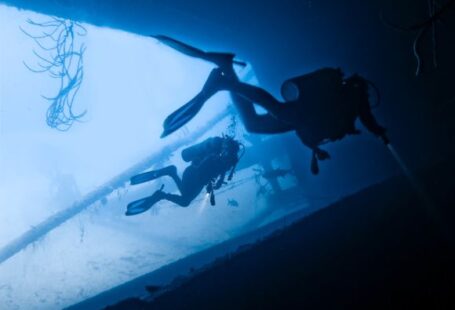For centuries, sunken shipwrecks have captured the imagination of people around the world. These submerged vessels hold stories of adventure, tragedy, and mystery, providing a glimpse into the past and the lives of those who sailed the seas. From ancient times to modern-day, the history of sunken shipwrecks is a testament to the power and unpredictability of the ocean.
A Window into the Past
Sunken shipwrecks serve as time capsules, preserving artifacts and evidence of past civilizations. They provide valuable insights into the history of maritime trade, naval warfare, and exploration. For archaeologists and historians, shipwrecks offer an unparalleled opportunity to study and understand the past.
Ancient Shipwrecks
Some of the oldest known shipwrecks date back thousands of years. The Uluburun shipwreck, discovered off the coast of Turkey, is estimated to be over 3,300 years old. It contained a treasure trove of artifacts, including pottery, jewelry, and weapons, shedding light on the ancient trade networks of the Mediterranean.
Another famous example is the Antikythera shipwreck, discovered by divers off the coast of Greece. This ancient Roman wreck yielded the Antikythera Mechanism, a complex mechanical device believed to be an early analog computer.
Shipwrecks of Exploration
During the Age of Exploration, numerous ships met their fate while seeking new trade routes and territories. One notable example is the wreck of the Spanish galleon Nuestra Señora de Atocha. Laden with treasures from the New World, the Atocha sank off the coast of Florida in 1622. It wasn’t until 1985 that the wreck was discovered, revealing a wealth of gold, silver, and precious gems.
The Titanic
Perhaps the most famous shipwreck of all time, the sinking of the Titanic in 1912 captured the world’s attention. The tragic loss of over 1,500 lives sparked a wave of maritime safety reforms. It wasn’t until 1985 that the wreckage was located deep in the North Atlantic. Today, the Titanic serves as a poignant reminder of the human cost of hubris and the perils of the sea.
Treasures of the Deep
Shipwrecks often hold hidden treasures that have been preserved by the sea. From gold and silver to precious gemstones, these underwater treasures captivate the imagination of treasure hunters and explorers. The allure of sunken riches has led to countless expeditions and salvage operations, some successful, while others remain elusive.
The Hunt for Shipwrecks
The search for shipwrecks is a challenging and exciting endeavor. Using advanced sonar technology, divers and researchers scour the ocean floor in search of hidden wrecks. Once a wreck is located, careful planning and expertise are required to safely explore and document the site. The process of excavation and recovery can take years, but the rewards are immeasurable.
Preserving the Past
While the exploration of shipwrecks provides valuable historical insights, it is crucial to balance the preservation of these sites with the desire for discovery. Many shipwrecks are fragile and can be easily damaged or destroyed. Conservation efforts aim to protect these underwater time capsules for future generations to study and appreciate.
In conclusion, the history of sunken shipwrecks is a captivating tale of exploration, tragedy, and hidden treasures. These submerged vessels offer a unique glimpse into the past, preserving the stories of those who sailed the seas long ago. From ancient times to modern-day, the allure of sunken shipwrecks continues to captivate our imagination and fuel our desire to unravel the mysteries of the deep.





